16 Types of Blackbirds in Illinois (With Pictures)
Last Updated on
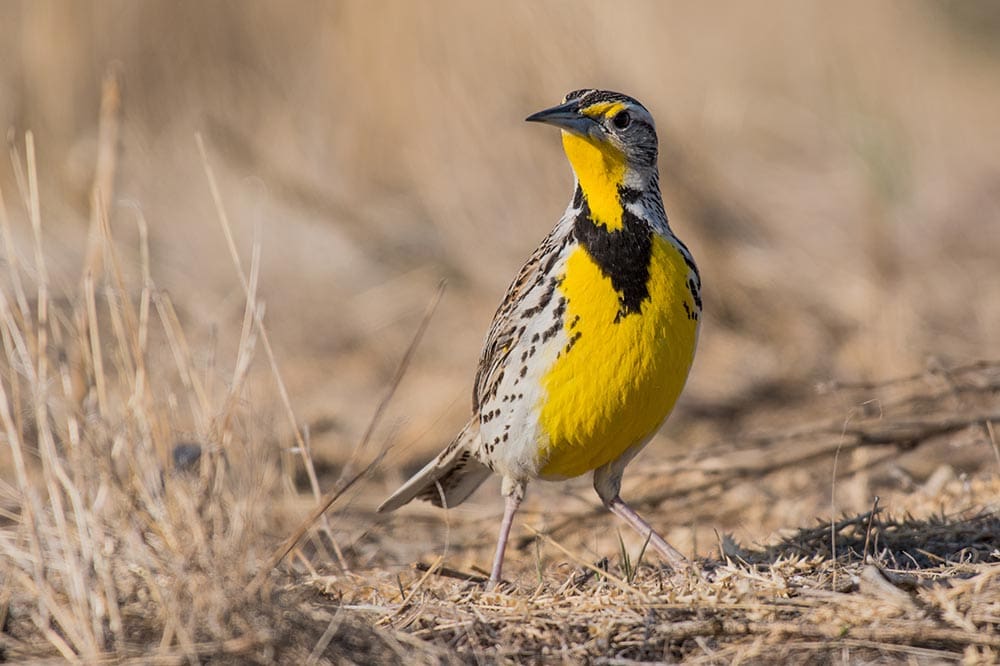
North America is home to many species of birds, and Illinois commonly sees 16 types of blackbirds. These include Red-Winged Blackbirds, Common Grackles, and Brown-Headed Cowbirds, all of which are protected by the Illinois Wildlife Code and the Migratory Bird Treaty Act. None of these birds, their eggs, their nests, or their offspring can be removed or harmed in any way. If the birds must be removed from an area, a permit is necessary. The Illinois Department of Natural Resources must be contacted for further assistance.
Since the various types of blackbirds look quite similar to each other, it can be difficult to tell the difference between them. Whether you’re curious about the different species of birds or want to be able to distinguish them at your outdoor bird feeder, this article goes over the details of the 16 blackbirds that you’re likely to see in Illinois.

The 16 Types of Blackbirds in Illinois
1. European Starling
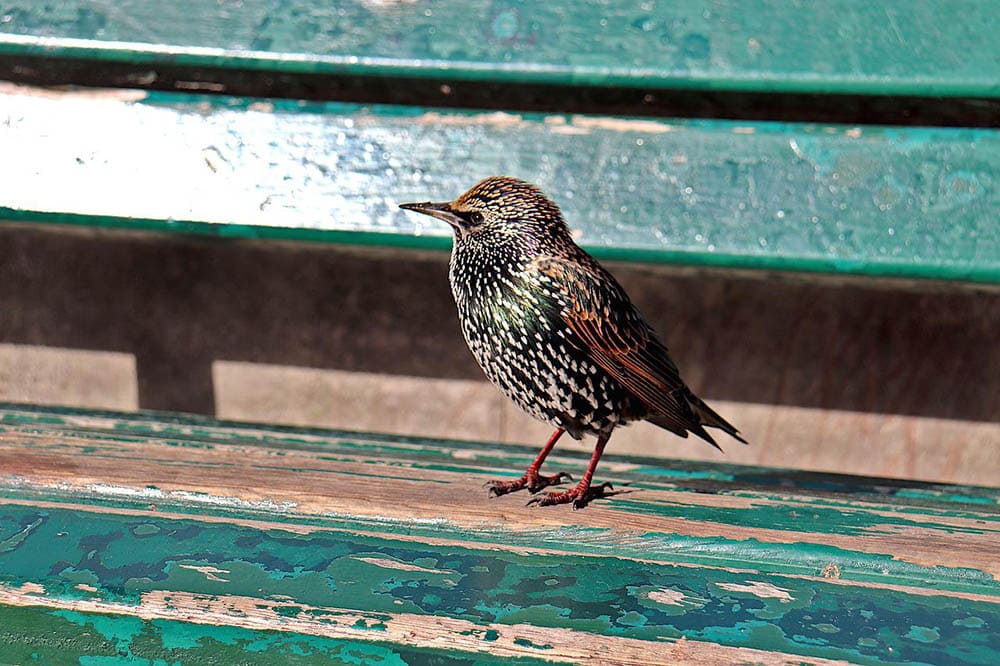
| Weight | 2–3.5 ounces |
| Wingspan | 12–16 inches |
| Length | 8–9 inches |
European Starlings can be seen all year long in Illinois. They are an introduced species and live all over North America except in Alaska. These birds travel in flocks and can be aggressive. Groups of European Starlings can be quite noisy and the birds are often considered pests. Just before dusk, you may be able to see thousands of Starlings flying and swirling together in the sky. This flock of Starlings is called a murmuration and is done to signify the birds’ chosen spot to rest for the night. One theory of why this is done is to deter predators. The large group can be confusing to predators and decreases the birds’ risk of danger.
You can identify these birds by their stocky bodies covered in black feathers with iridescent purple, green, and blue sheens. Their chests and back are dotted with white, and they have prominent yellow beaks.
2. Brown-Headed Cowbird
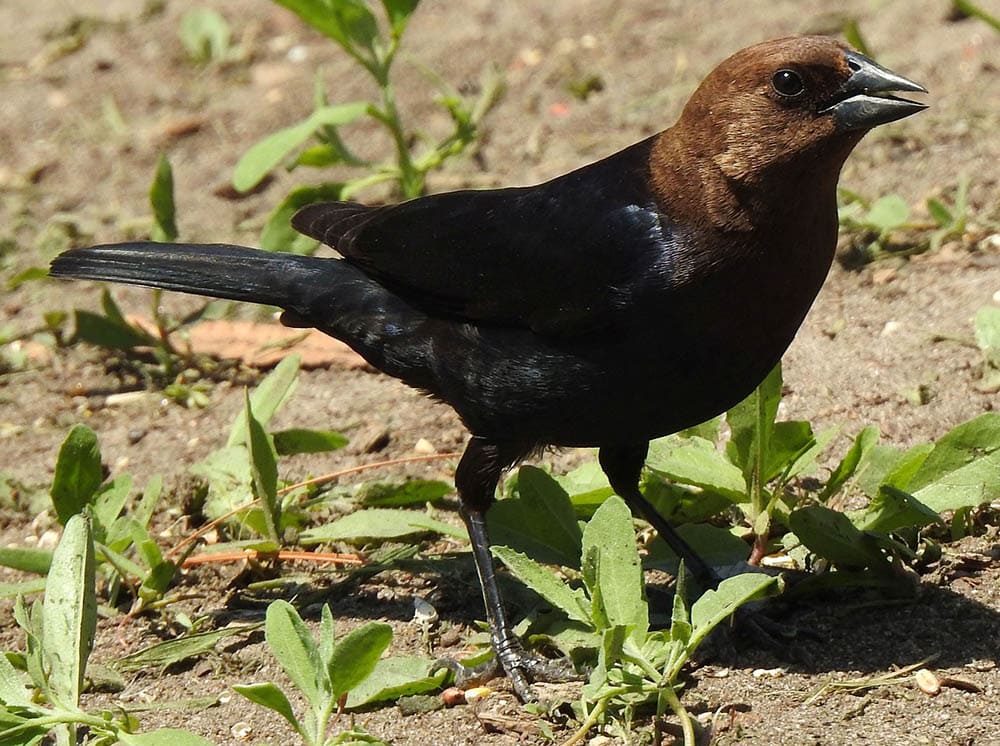
| Weight | 1.3–1.8 ounce |
| Wingspan | 14.2 inches |
| Length | 7–8.7 inches |
Brown-Headed Cowbirds are seen in Illinois during spring and summer before migrating south in August. The males have black bodies with brown heads while the females are grayish brown. They hang out around grazing livestock, waiting for the animals to unearth insects for them to eat. You can also find these birds at your backyard feeder.
One interesting fact about Brown-Headed Cowbirds is that they don’t build nests. Instead, they destroy other birds’ eggs and lay their eggs in that nest. If the bird realizes the switch and removes the intruder’s egg, the Cowbird may come back and destroy their nest. But many birds don’t realize that a switch has been made, and they go on to raise the Cowbird chick as their own. Once the Cowbird leaves the nest, they spend time with other Cowbirds, not the species that raised them.
3. Common Grackle
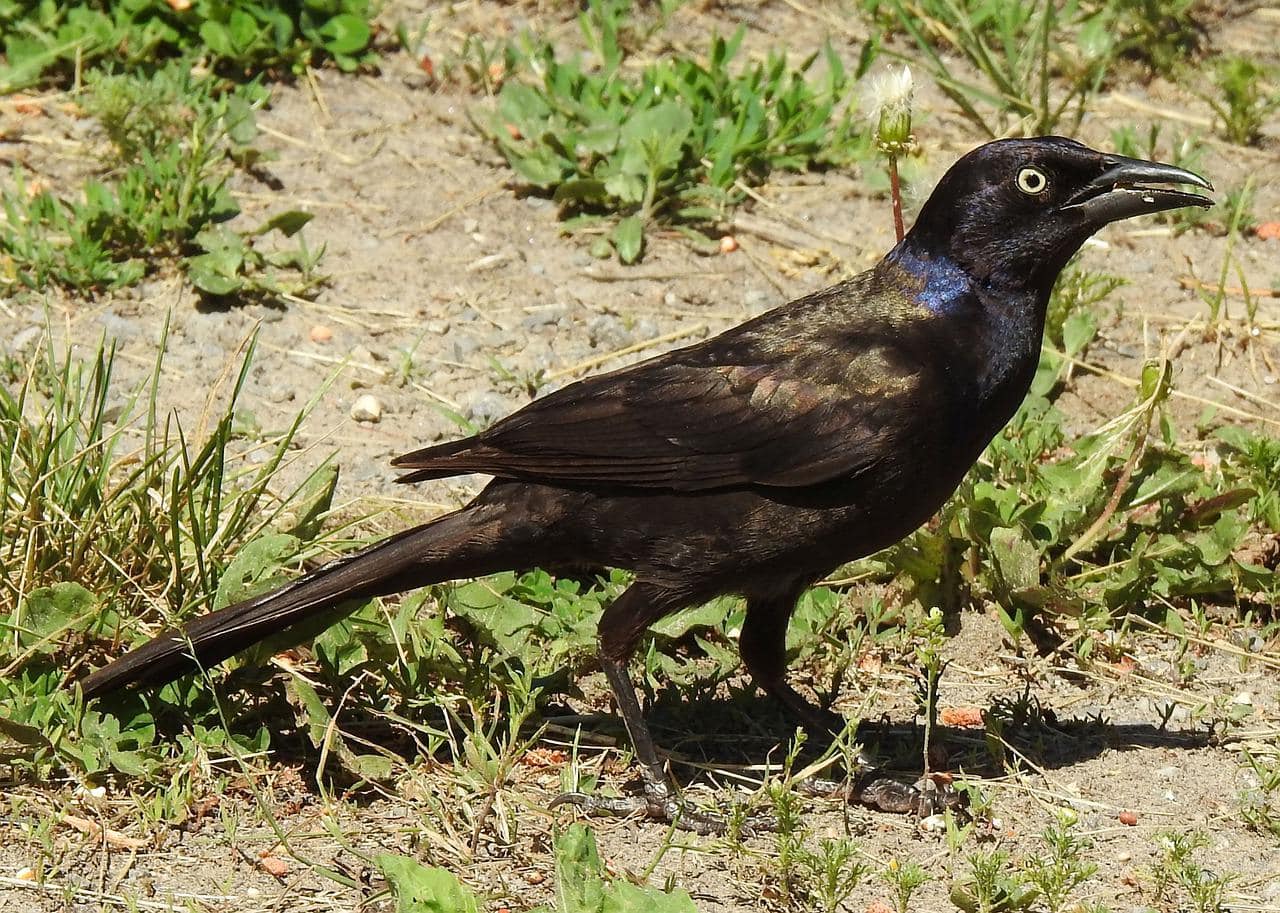
| Weight | 2.6–5 ounces |
| Wingspan | 14.2–18.1 inches |
| Length | 11–13.5 inches |
Common Grackles are large birds commonly seen in Illinois. You can recognize this bird by their large body, round gold eyes, long beaks, and glossy, iridescent blue head. Females are not as glossy as the males, but the two look similar.
These birds gather in enormous flocks in fields to roost and eat crops. They also eat seeds, nuts, insects, mice, and other birds. They can be a nuisance to farmers and are bullies at birdfeeders, often chasing smaller birds away.
You’ll often see Grackles washing their food. With a nut, seed, or piece of bread in their mouth, the Grackle will carefully dip the food into a water source before eating it. While the reason for this isn’t clear, one theory is that they are trying to soften the food as much as they can before consuming it.
4. Baltimore Oriole

| Weight | 1.1–1.4 ounces |
| Wingspan | 9.1–11.8 inches |
| Length | 6.7–7.5 inches |
You’ll recognize Baltimore Orioles by their deep black heads on top of bright orange bodies. The wings are black with white stripes. The females are more yellow than orange and have brown wings and backs.
Baltimore Orioles migrate in the winter to Florida, Central America, and the Caribbean. While they eat insects and fruit, doing significant damage to fruit bushes and trees, you can attract these birds to your yard with oranges and grape jelly.
These birds make nests that resemble hanging bags, woven together from fibers. They like to hang out high in the trees, so you won’t see them often unless you’re feeding them their favorite sweet treats.
5. Orchard Oriole
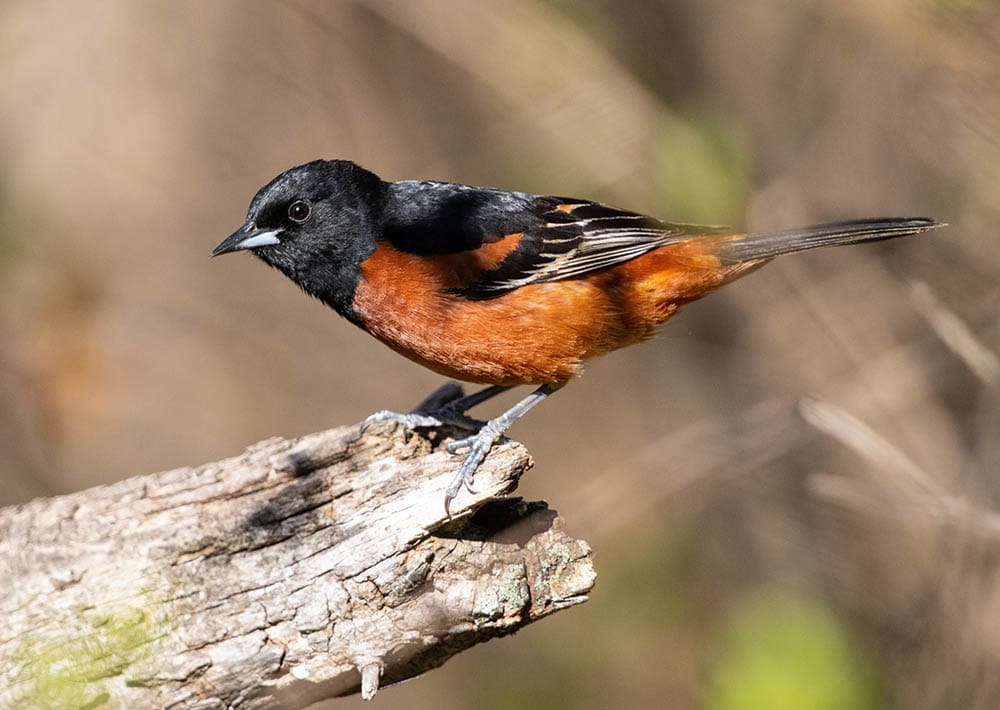
| Weight | 0.6–1 ounce |
| Wingspan | 9.8 inches |
| Length | 5.9–7.1 inches |
Orchard Orioles are seen in Illinois from April through November. The males have black heads with bold reddish-brown bodies. The females are greenish yellow with darker wings and white wing bars.
Orchard Orioles eat insects as their main diet, but they’re also known to drink flower nectar and eat fruit. Like the Baltimore Orioles, you can attract Orchard Orioles to your yard with cut-up oranges or berries.
The Orchard Oriole is the smallest species of blackbird in North America.
6. Bobolink

| Weight | 1–2 ounces |
| Wingspan | 10.6 inches |
| Length | 5.9–8.3 inches |
Bobolinks were once known as “ricebirds” in the South because of how much damage they caused to rice fields. Breeding male Bobolinks are black with white backs and a yellow patch on the top and back of their heads. Females and non-breeding males are brown with dark eye lines, dark backs, and striped heads.
These birds forage in flocks for insects and seeds. They will also eat insects and grains during migration. In their tropic destination after migrating, they will indulge in berries and other fruit.
Bobolinks make their nests on the ground, and unfortunately, this has led to a decline in their population numbers. To help them increase their population, you should mow your grassy fields only once a year, after the birds have left.
7. Brewer’s Blackbird
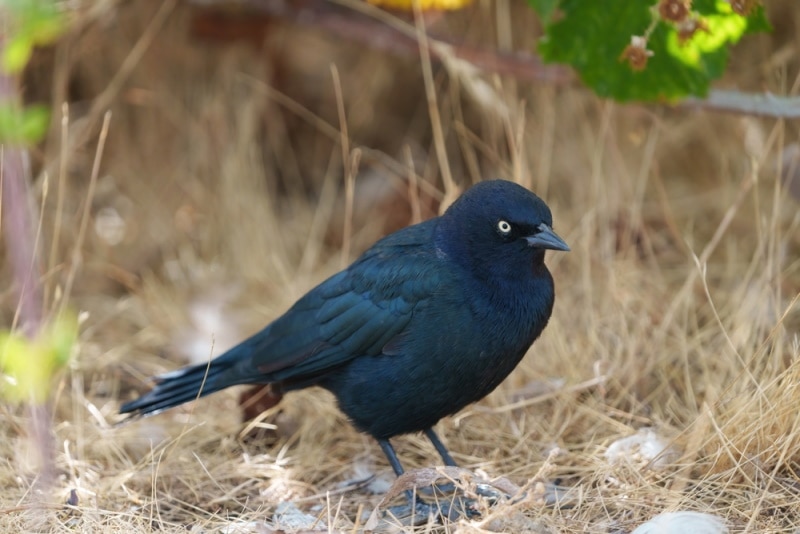
| Weight | 1.8–3 ounces |
| Wingspan | 14.6 inches |
| Length | 7.9–9.8 inches |
The Brewer’s Blackbird is a solid, glossy black color with gold eyes. Females are pale brown with brown eyes, dark wings, and dark tails. These birds enjoy hanging out in the forests, meadows, and grasslands of Illinois. They’re quite social, nesting in colonies to defend themselves against predators.
These birds adapt well to human presence and will appear in parks and backyards, especially if there are bird feeders out. They eat seeds, insects, and anything else that they can find. Sunflower seeds and millet in feeders will attract Brewer’s Blackbirds.
The birds use grass and twigs to make their nests in shrubs or trees. They line the nest with mud, using it as a glue to hold everything together. A soft layer of grass is then added for the lining.
8. Red-Winged Blackbird
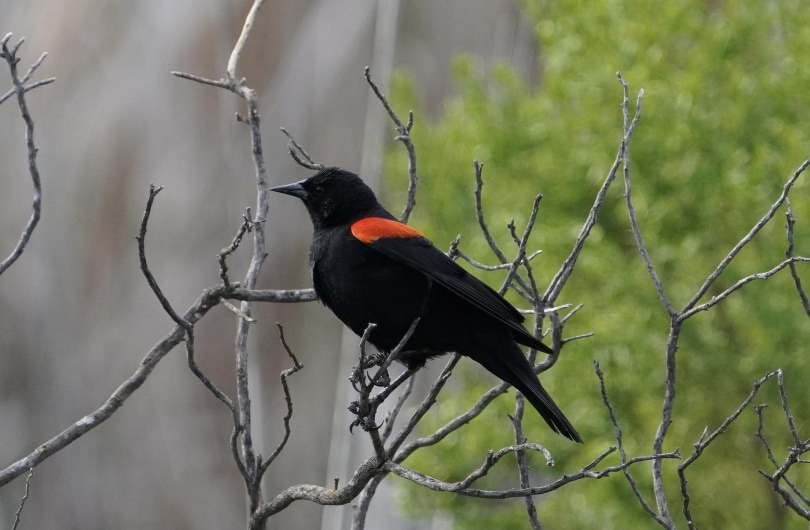
| Weight | 1.1–2.7 ounces |
| Wingspan | 12.2–15.8 inches |
| Length | 6.7–9.1 inches |
Red-Winged Blackbirds are easy to identify both by their appearance and their calls. They produce a short, rich, musical call that has three tones to it. They are also known for making a “check check check” sound when feeding or defending their area.
Red-Winged Blackbirds are commonly seen with Starlings, Grackles, and Cowbirds, especially around backyard bird feeders. You can identify them by their black bodies with red-and-yellow patches on the wings. Females are brown and streaked with white. They may have small, pale patches on their wings.
These birds are known for being heavily territorial during the breeding season, especially if they have nests nearby. They will dive bomb people, attacking their heads and backs if they get near the nesting site. This is called swooping. Many people are swooped while jogging, walking, or cycling through parks and trees.
9. American Crow

| Weight | 11–21 ounces |
| Wingspan | 2.5 feet |
| Length | 16–20 inches |
The American Crow is a large, solid black bird with a slight sheen to their plumage and a thick beak. They are known for their loud calls, making a distinctive “caw!” sound. These permanent, statewide residents of Illinois are intelligent and form close familial bonds. Yearling Crows will even help their parents tend to the newest offspring.
These clever birds can use tools for hunting and fishing. For example, a Crow can pick a splinter off a fence and use it to spear prey. They have good memories. They are known to mimic sounds and can learn to “talk” just like parrots.
You can find Crows in open woods, beaches, treetops, and fields. They eat on the ground and will feed on anything that they can find, including other animals and hatchlings that they steal from other birds’ nests. Crows aren’t commonly found at backyard feeders, but they will show up to eat food that is placed out in the open, like peanuts, fruit, and even garbage.
10. Rusty Blackbird
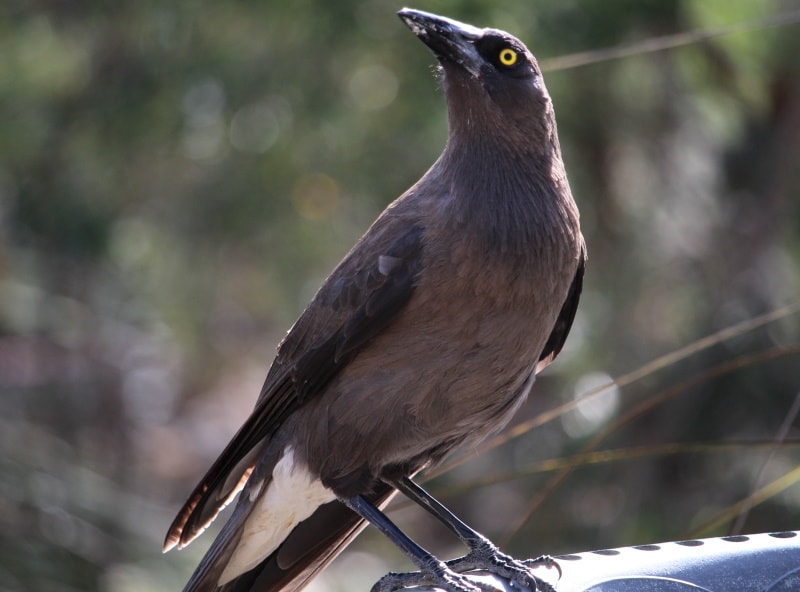
| Weight | 1.7–2.8 ounces |
| Wingspan | 14.6 inches |
| Length | 8.3–9.8 inches |
Rusty Blackbirds are commonly seen in Illinois in winter. Their rusty brown feather edges give them their name. Male Rusty Blackbirds are glossy black in the summer and during breeding seasons. The rust color comes out during their winter plumage. Female Rusty Blackbirds are greyish brown with rust feather edges.
These birds like wet areas, like ponds, swamps, and marshes. They eat insects, fish, seeds, and sometimes, other birds. Unfortunately, over the last 40 years, their population numbers have declined so much that they are now listed as vulnerable by the IUCN Red List.
- You might also like: 27 Types of Blackbirds in Florida (With Pictures)
11. Yellow-Headed Blackbird
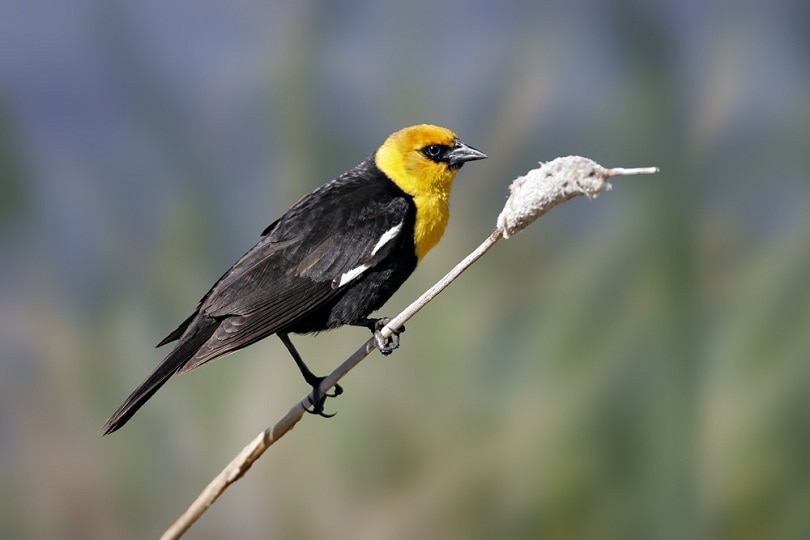
| Weight | 1.6–3.5 ounces |
| Wingspan | 16.5–17.3 inches |
| Length | 8.3–10.2 inches |
Yellow-Headed Blackbirds are hard to miss with their black bodies and vibrant yellow heads and chests. Females are brown with dull yellow heads and chests. These birds hunt insects by rolling over stones to reveal them, eating them as they scatter. They also eat seeds and grains, especially during the winter months.
These migrating birds travel in flocks to Southwestern states and Mexico each year once breeding is over. A feeder full of sunflower seeds will attract these birds to your yard. Yellow-Headed Blackbirds share territories and feeding areas with Red-Winged Blackbirds. However, these birds are larger than their red-winged friends.
12. Scott’s Oriole

| Weight | 1.1–1.4 ounces |
| Wingspan | 12.6 inches |
| Length | 9.1 inches |
The Scott’s Oriole is a rare sighting in Illinois but does make appearances. The males have deep black heads and wings with white wing bars and a rich yellow belly with yellow-and-black tail feathers. Females are dull yellow with brown-and-white wings.
The males start singing before the sun rises and continue to sing throughout the day. Like other Orioles, these birds are attracted to oranges, jelly, and sugar water. They will also eat Monarch butterflies, even though these insects are considered toxic. By not eating the cuticle where the toxins are stored, the birds manage to avoid being poisoned.
13. Great-Tailed Grackle

| Weight | 3.7–6.7 ounces |
| Wingspan | 18.9–22.8 inches |
| Length | 15–18.1 inches |
You’ll find the Great-Tailed Grackle throughout the western and midwestern United States, wherever humans are. They hang around urban areas because they like to frequent bird feeders. Their favorite snacks are millet and black oil sunflower seeds.
When the birds hunt their own food, they like to eat seeds, fruit, insects, small mammals, and lizards. Male Great-Tailed Grackles have iridescent black plumage and golden eyes. The females are dark brown with lighter undersides. They have longer tails, larger bodies, and larger beaks than Common Grackles.
14. Bullock’s Oriole

| Weight | 1–1.5 ounces |
| Wingspan | 12.2 inches |
| Length | 6.7–7.5 inches |
Bullock’s Orioles spend their winters in Mexico but can be found throughout the western half of the United States before then. They resemble Baltimore Orioles with bright orange bodies and black-and-white wings. Females have yellow heads and gray-and-white bodies. One key difference between the two is that the male Bullock’s Oriole has an orange face, not black.
These birds, like other Orioles, like to eat nectar, fruit, and insects. You can attract them to your yard with oranges, berries, and jelly. They will also visit hummingbird feeders.
15. Western Meadowlark
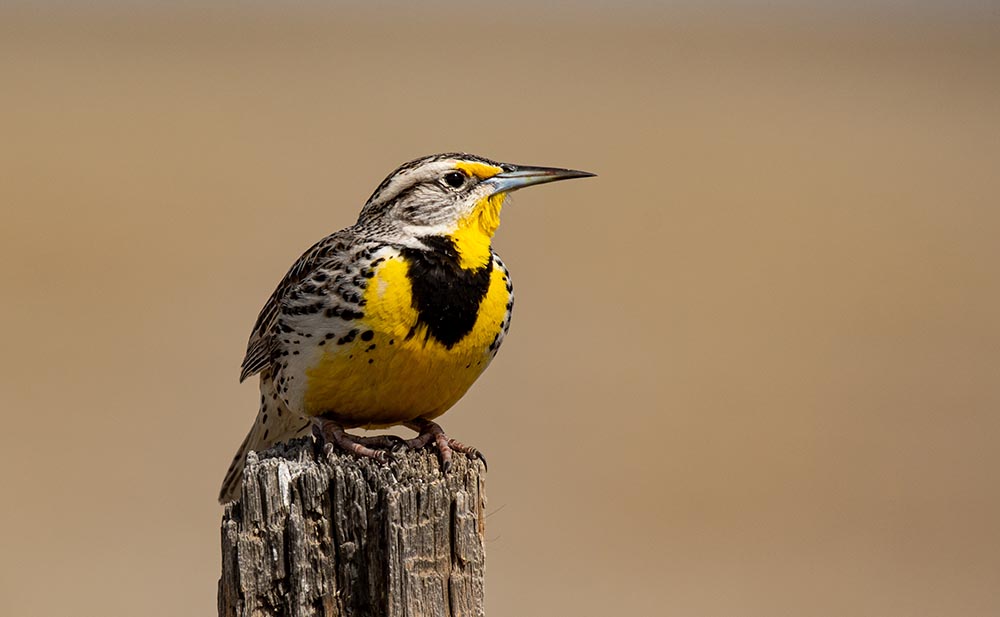
| Weight | 3.1–4.1 ounces |
| Wingspan | 16.1 inches |
| Length | 6.3–10.2 inches |
Western Meadowlarks are not commonly seen in Illinois, but they do regularly show up in the northern part of the state. They are around the size of a Robin and have bright yellow undersides and brown-and-white wings. A black V-shaped band runs across their chests.
They like to visit fields and meadows where they search for food and sing sweetly. They make a series of whistles and tweets that are pleasant to hear. If you have a feeder full of cracked corn or sunflower seeds, you might attract these birds. In the winter, Western Meadowlarks migrate to southern states.
16. Eastern Meadowlark
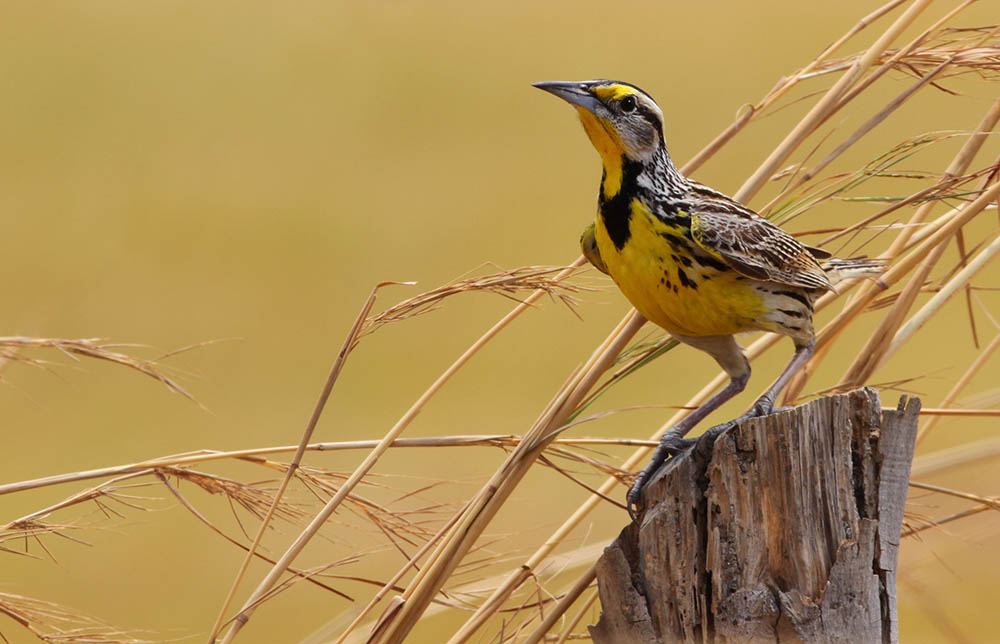
| Weight | 3.2–5.3 ounces |
| Wingspan | 13.8–15.8 inches |
| Length | 7.5–10.2 inches |
Eastern Meadowlarks can be spotted in the summer in Illinois before migrating south. These birds are a threatened species. They nest on the ground to stay hidden and can be found living in grasslands and wet fields.
Eastern Meadowlarks have short tails and spear-like beaks. They are pale brown with a black band across the chest, like Western Meadowlarks. Their undersides are bright yellow.
These birds make flutelike calls and are often seen perched on fenceposts, singing their pleasant melodies.
Conclusion
Blackbirds in Illinois have different characteristics. Some have a beautiful mix of colors but are still in the Blackbird family. We hope that this article has helped you identify these birds and distinguish them from one another. If you’re interested in attracting bl, hang feeders that hold cracked corn, millet, peanuts, fruit, and nectar. Always provide a fresh water source for the birds. Then, sit back and watch them have a feast!
Featured Image Credit: Kerry Hargrove, Shutterstock
Table of Contents
- The 16 Types of Blackbirds in Illinois
- 1. European Starling
- 2. Brown-Headed Cowbird
- 3. Common Grackle
- 4. Baltimore Oriole
- 5. Orchard Oriole
- 6. Bobolink
- 7. Brewer’s Blackbird
- 8. Red-Winged Blackbird
- 9. American Crow
- 10. Rusty Blackbird
- 11. Yellow-Headed Blackbird
- 12. Scott’s Oriole
- 13. Great-Tailed Grackle
- 14. Bullock’s Oriole
- 15. Western Meadowlark
- 16. Eastern Meadowlark
- Conclusion
About the Author Jessica Rossetti
Jessica has shared her home with feathered, furry, and scaly pets for over 30 years as a lifelong resident of Chicago. Her enthusiasm for animals began at an early age and led to her owning and operating a pet care company. Jessica now writes full-time and spends her days writing about all types of animals. Jessica and her husband Dominic enjoy the city life while turning their backyard into an oasis for the neighborhood squirrels and birds.
Related Articles:
Monocular vs Telescope: Differences Explained (With Pictures)
10 Types of Hummingbirds in Arkansas (With Pictures)
8 Types of Hummingbirds in Nebraska (With Pictures)
5 Types of Hummingbirds in Idaho (With Pictures)
3 Types of Hummingbirds in Mississippi (With Pictures)
8 Types of Hummingbirds in Kansas (With Pictures)
5 Types of Hummingbirds in West Virginia (With Pictures)
5 Types of Hummingbirds in Ohio (With Pictures)
